We were feeling the need to perfect our double hammocking skills as preparation for yet another wilderness trip. As we often hike in Fiordland NZ where it is apt to rain on average an inch a day and it can be difficult anyway to find a level spot for a tent, it is well to be prepared with a tarp and a hammock. I/we have never ventured there without this ability.
We used to sling one hammock underneath the other (which is a tad awkward, but works) until I hit on the idea of using a couple of rods to separate the hammocks from each other. The post Simple Hammock Double Up outlines my first attempt at this. It works, but you need a couple of short lengths of string to hold the two pieces of stick inside the poly pipe so they don’t fall out. We already had the Hummingbird Hammocks. Unfortunately they no longer make them so maybe you should order your hammock from Simply Light Designs
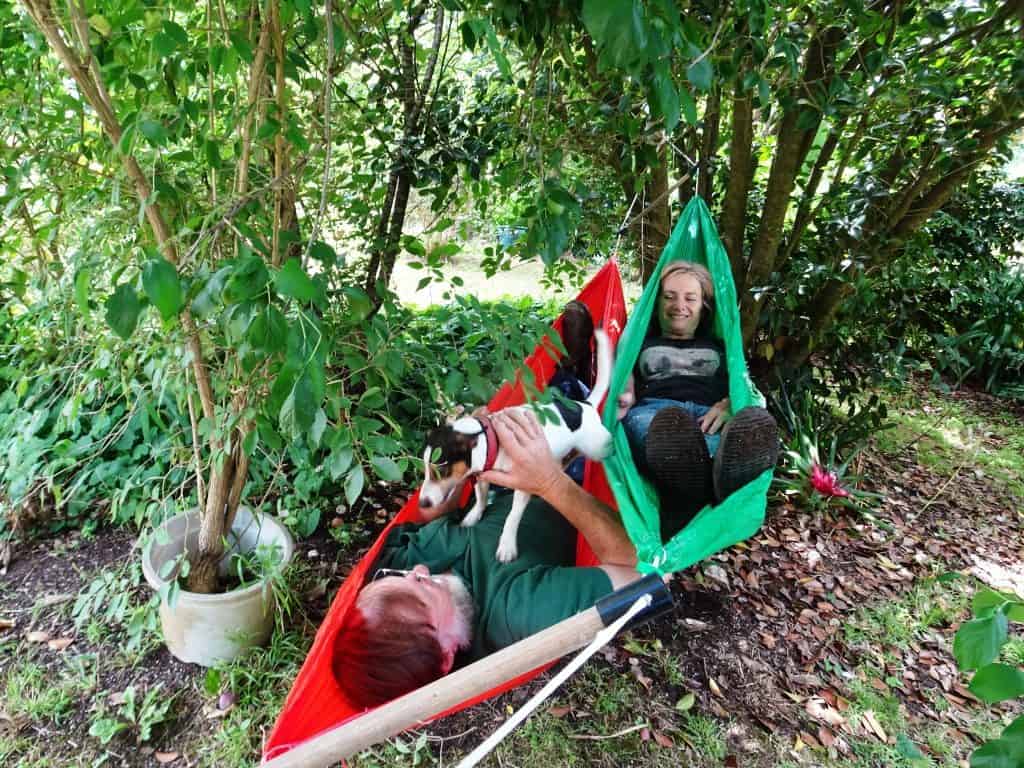
In the current version I am using a couple of lengths of carbon tube so that everything is in my kit ready to just be hung from the two trees. In this version I have a cord which has an overhand knot tied in either end passing up the centre of the tube. The hammock suspensions are attached around the tube and through a loop of the cord so that the hammocks cannot slide towards each other.
I could also drill holes in the tube so that the loop cannot move at all either inwards or out. The next version will probably have this refinement.
We have already needed to camp out in hammocks in the Fiordland bush (singly and together) in the past. (See Dusky Track 50th Anniversary Walk) I/we want this to be as safe and comfortable as possible.Below we were using an 8′ x 8′ cuben tarp. The bare minimum for two I would say.
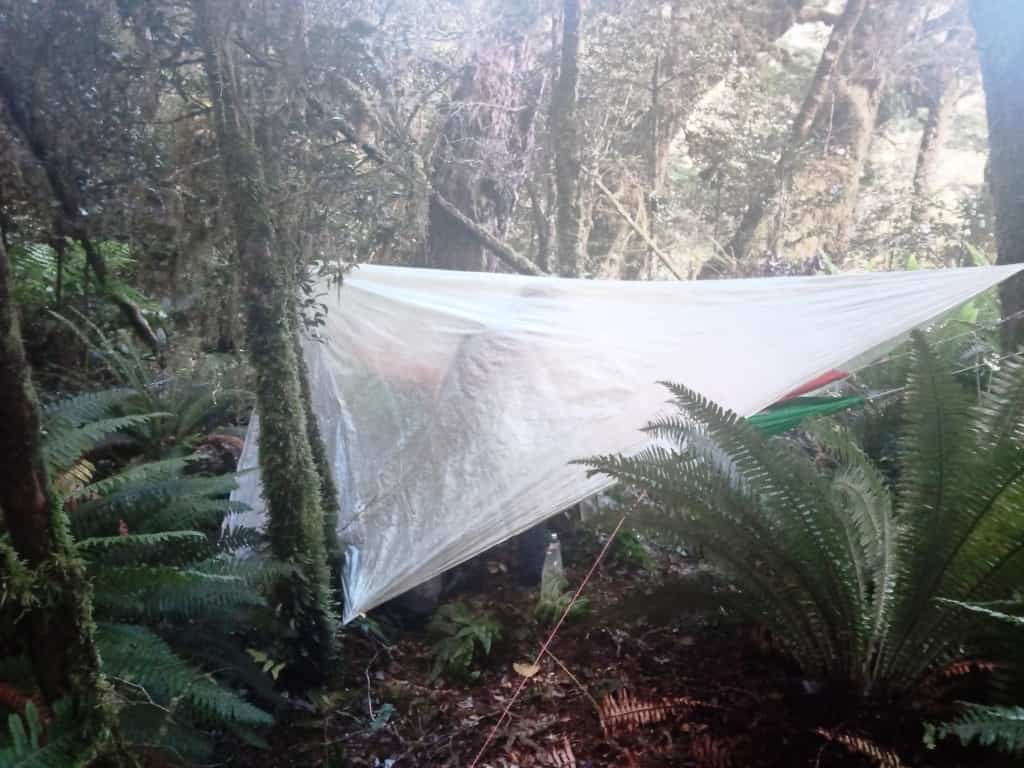
I do plan to make a new version of my Grey Flyer/Deerhunters#2 tent which will double as a hammock tarp for this purpose, but just in case we decide to go in a hurry before I have a chance to build it I purchased this Aricxi Tarp from Aliexpress for less than A$100 delivered which will do the job of keeping us safe and dry admirably. It is a ‘bulletproof’ 12′ x 10′ hex tarp with Dyneems reinforcement at the eight tie-out points. It comes with ground-hogs, micro cord locks and reflective guylines. Tarp weight is 480 grams. I am no longer confident in the cuben tarp I have used in the past as cuben has an unpleasant tendency to shred. We value our lives more than the small weight saving is worth.
During the course of this experiment I have also found that the (Chinese) Trailstar Tent (which we now have two of) can also be used as a hammock tarp if I sew a (hanging) loop on the top of it/them (through which the tarp centreline will pass). I was going to sew a torch hanging loop inside anyway. I will have a couple of posts about these excellent tents soon.
The lighter of these two tents is nearly 100 grams lighter than the Aricxi Tarp yet provides quite enough coverage for the two of us. This means that it can be used either as a tent or a hammock tarp – which is very handy. Its length (and max width) of coverage is a bit over 11′. I would want to make a bathtub floor for it for Fiordland use though. At present I am using a 7′ x 7′ silnylon tarp as the floor – which works well.
I have ordered some adjustable ridgelines from Simply Light Designs US$11 ea (Jan 2025). Two will be used on the hammocks and the third will be lengthened and used as a centreline for the tarp. It would be easy to make these (whoopie sling devices yourself. There are plenty of instructables about it.
You can hang head to toe (preferable nights for extra space and comfort):
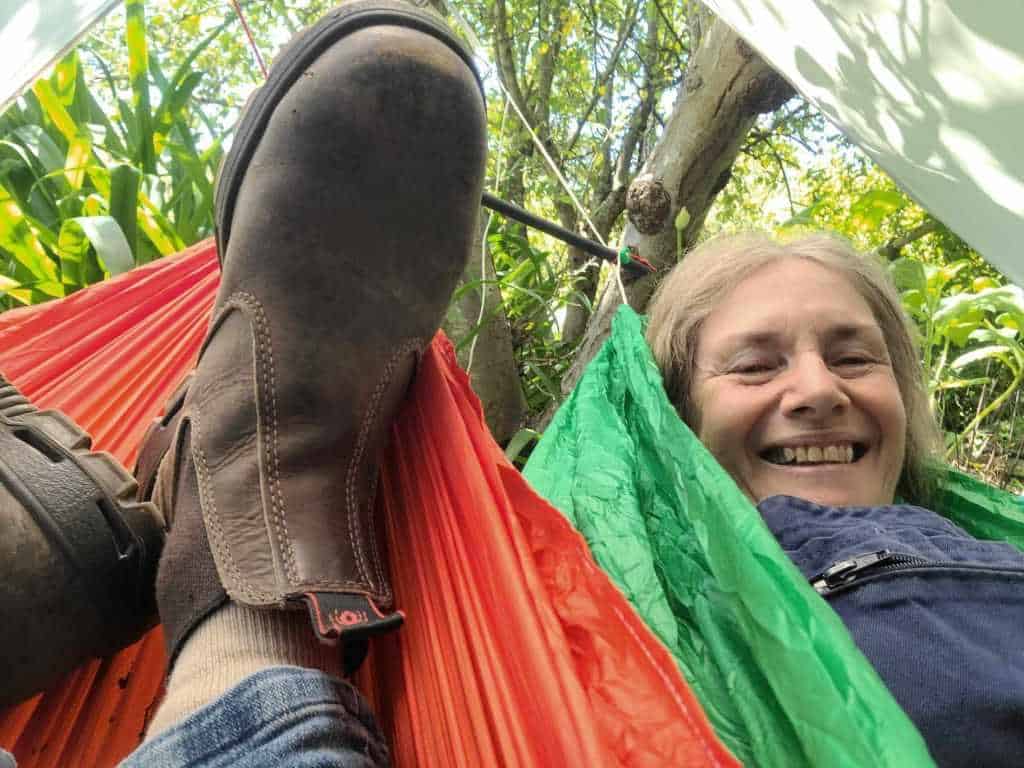
Or side by side. More romantic for sure. The carbon tubes are 50 cm (20″) long.

You can see I should have shortened the cord a little.
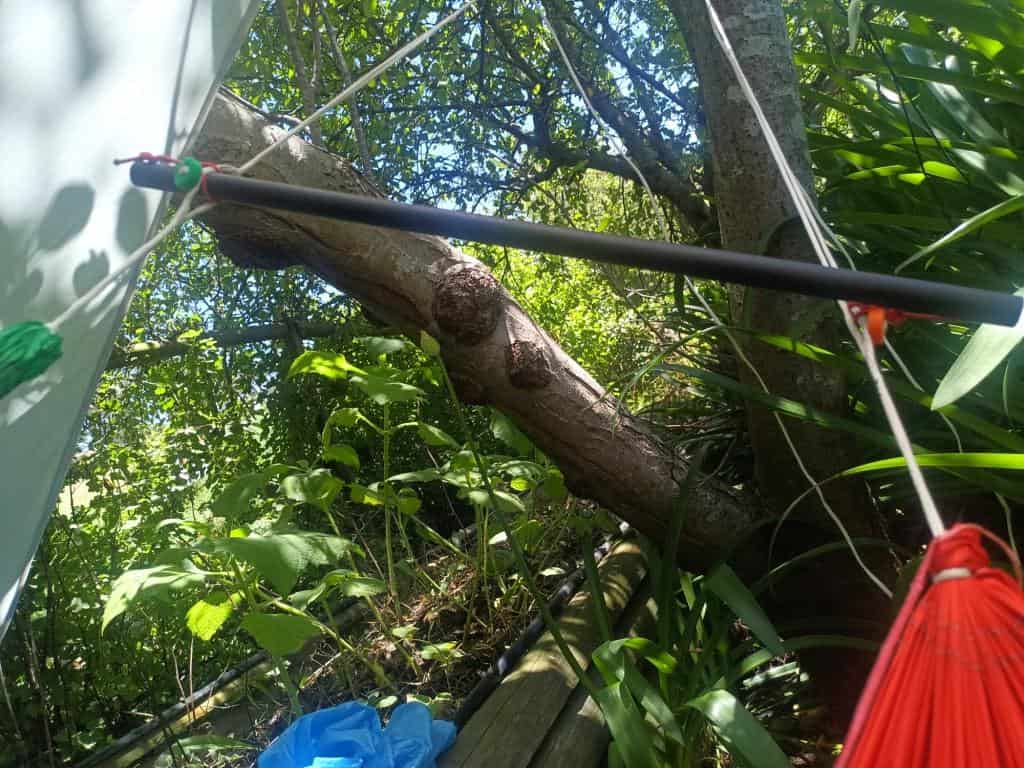
When you stop for lunch on a wet day you can sit facing each other.
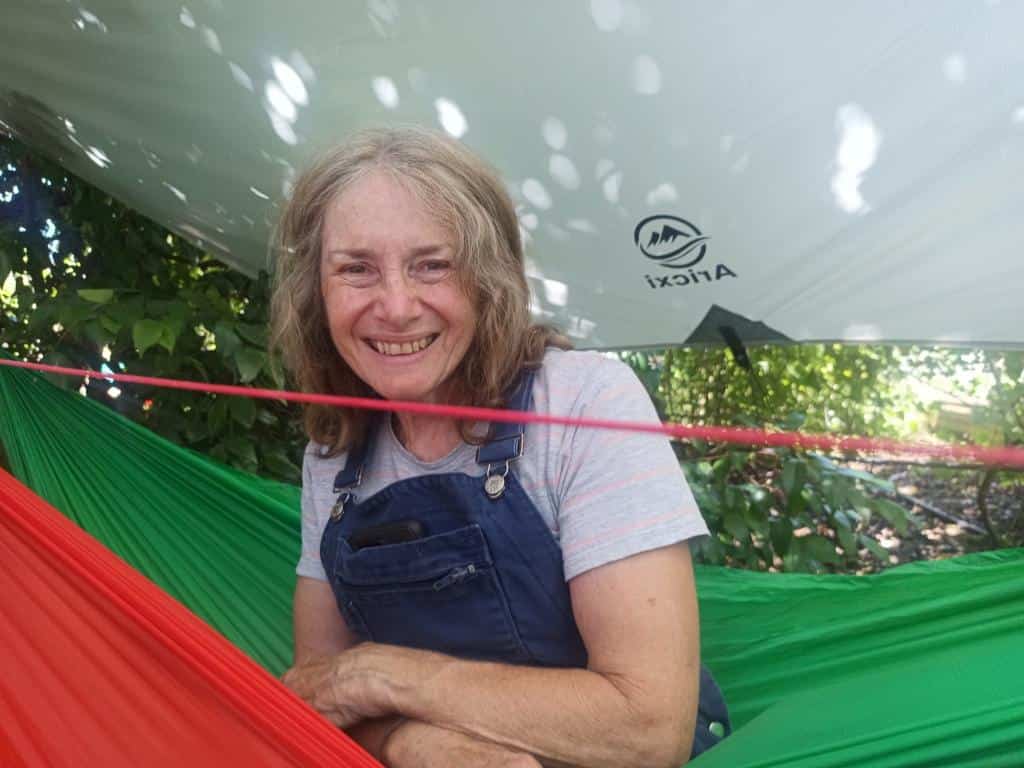
I could have the tarp lower and wider but I think you can see that we are going to be staying quite dry no matter how much it rains.
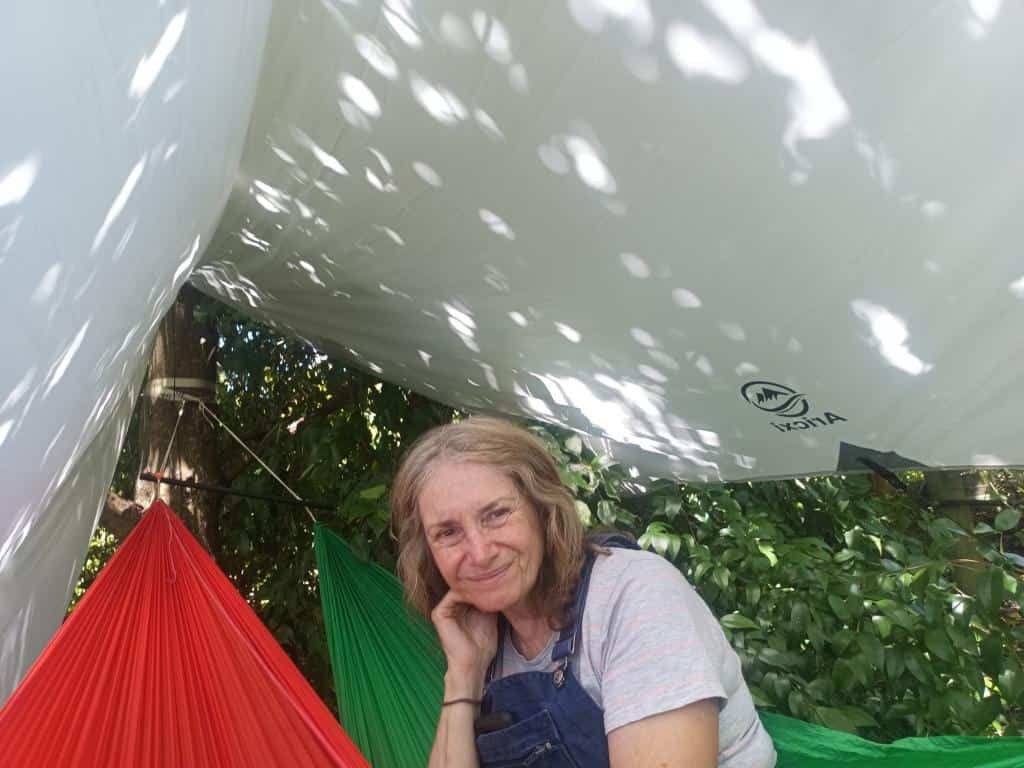
The old prune tree (I used to use) has had its main branch break so I was challenged to find another spot in the garden where I had to trees which were approximately 13-14′ apart. Unfortunately these two are on a very substantial slope (both ways) so that it would be an awkward camp, but nonetheless we would manage to be dry and comfortable even in such an unfortunate site.
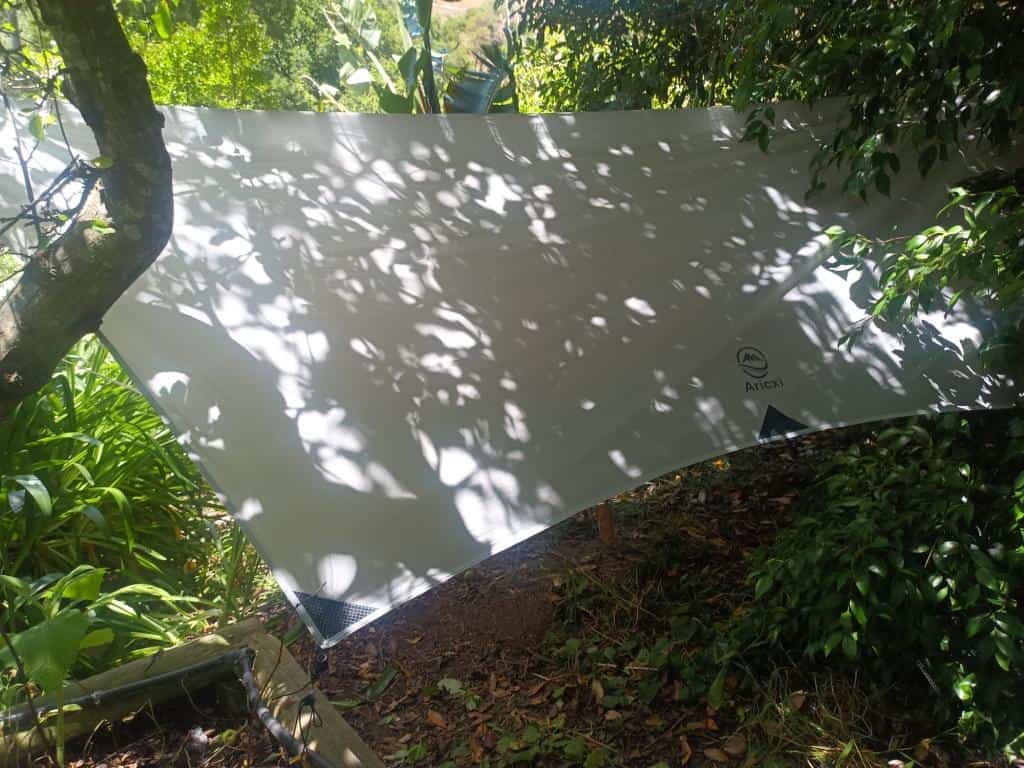
This is my alternative idea. Actually I think I will stick to having the cord just go through the middle with an overhand knot at each end. Just need to adjust the knots so that: a. there is enough room to pass the hammock suspension through the loop and b. not so much slack that the distance between the hammocks is unnecessarily foreshortened.
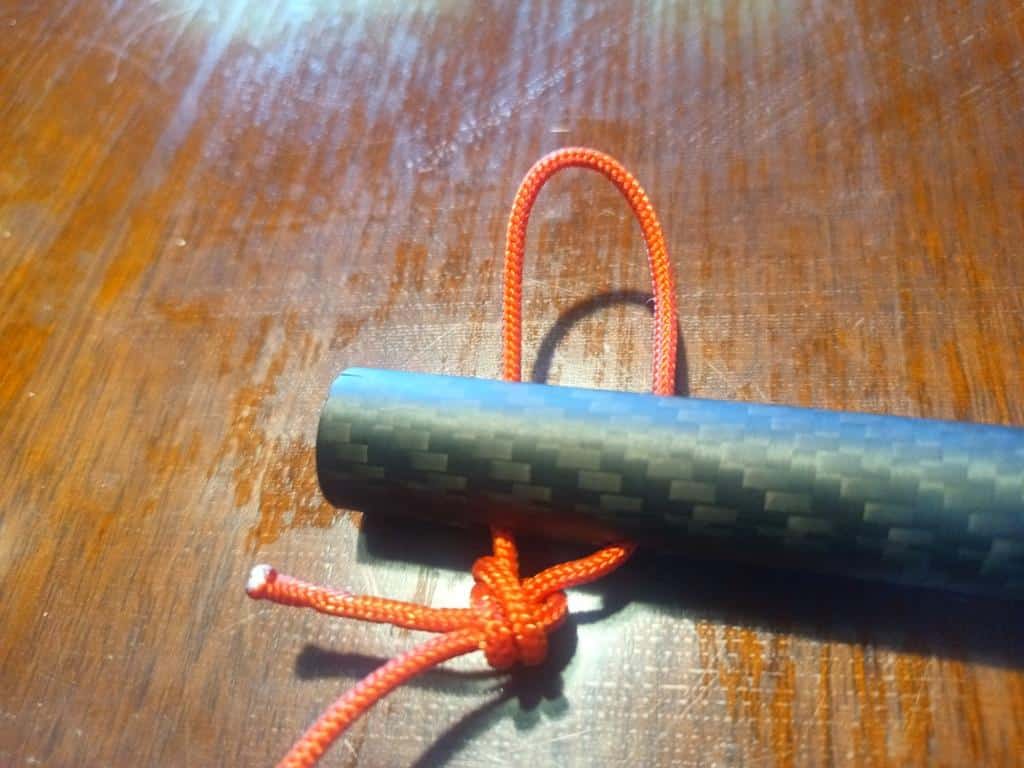
PPS: A reconsideration. I am now really thinking that my original idea (plus a couple of found sticks cut down with my trusty Coghlans ‘Sierra Saw‘ ) – but joined with a short length of elastic cord to prevent the sticks from falling out – will prove to be the best solution for most folk”s hammock suspension systems. You will need to drill another hole for the shock-cord.
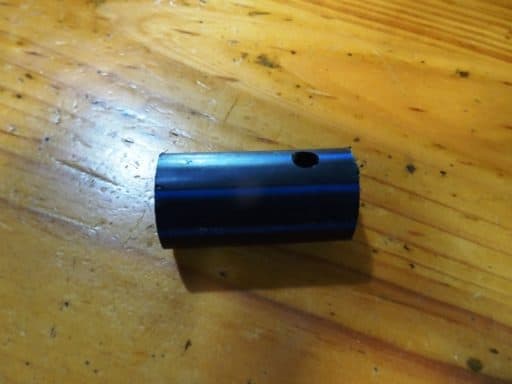
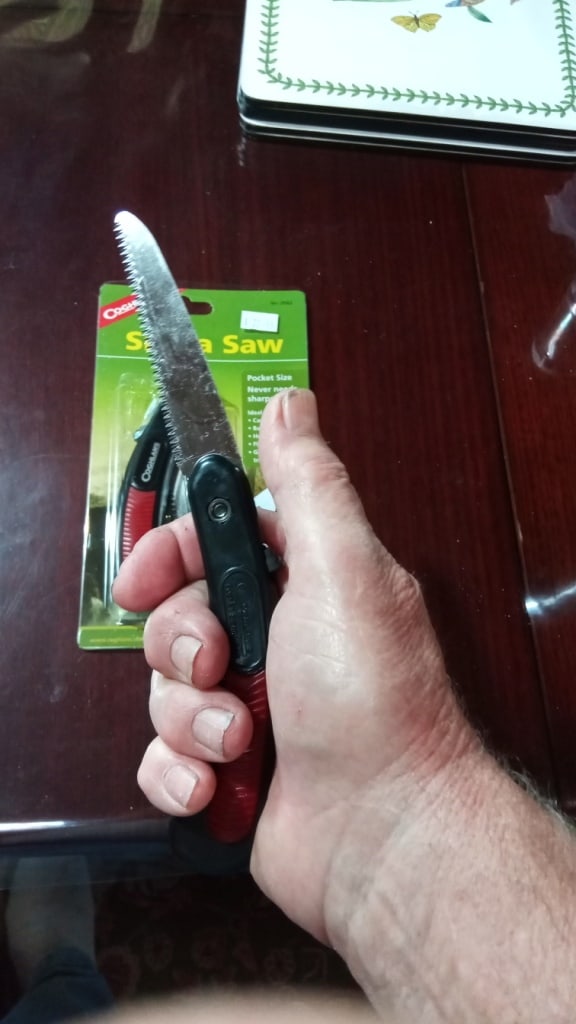
A BTW: Hennessy Hammocks now have an open asym hammock (The Leaf) for $109 delivered. I have ordered one. No more comfortable hammock ever existed.
PS: We just use our Thermarest x_Therms or X-Lite mats in the hammocks and our normal sleeping bags/quilts . This has always been fine for us down to around -10C anyway.
